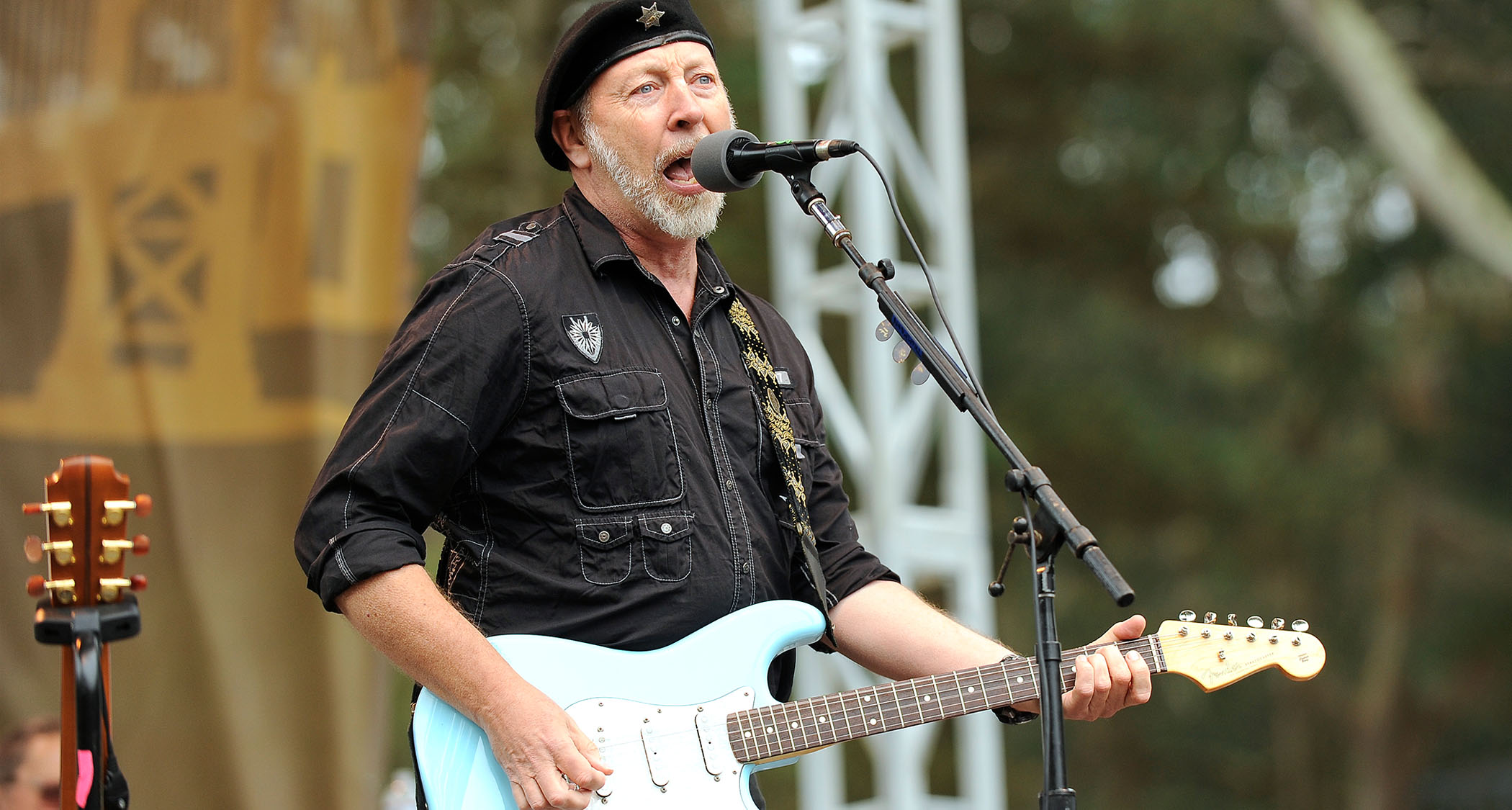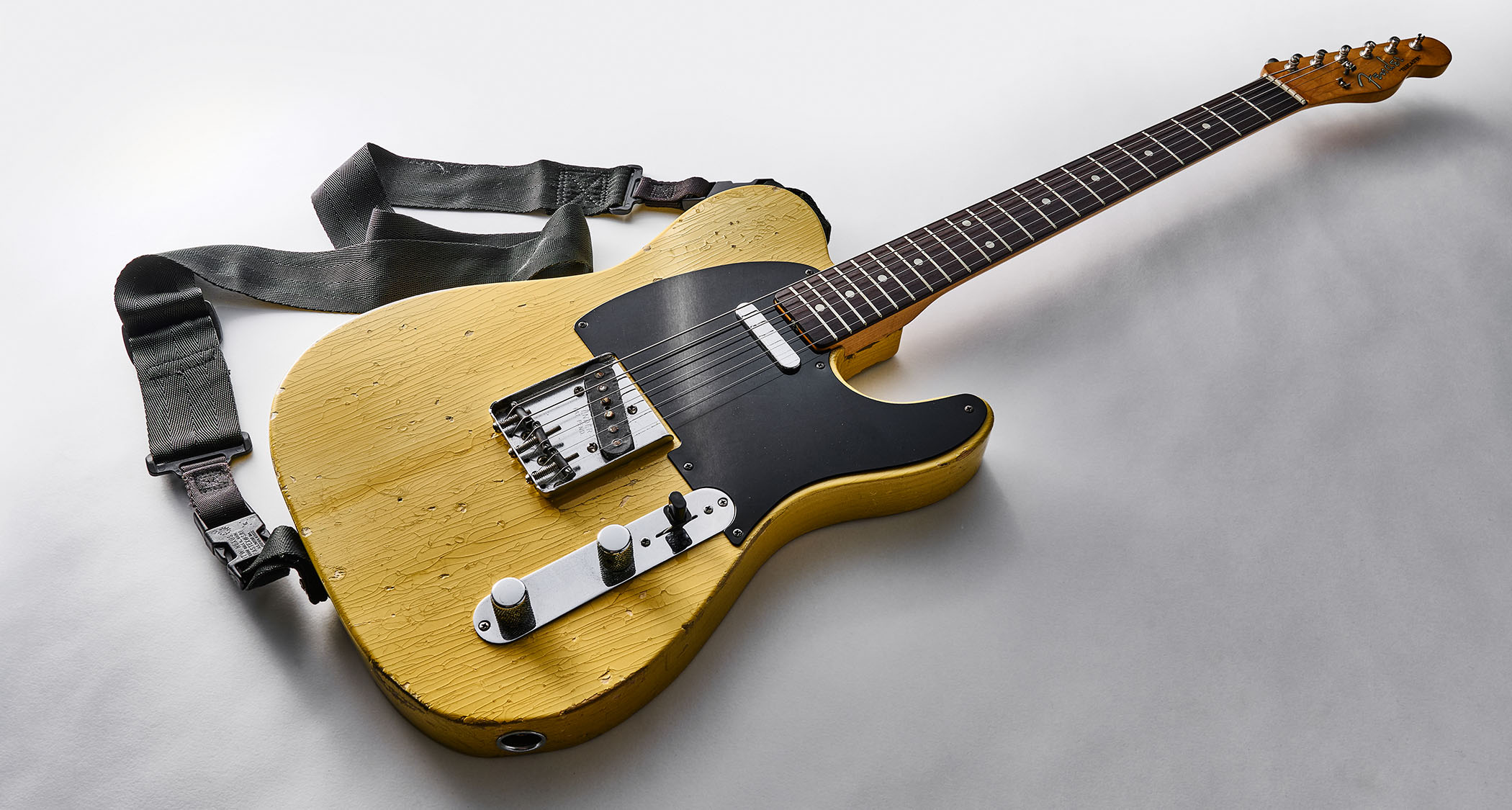“I hate guitar jams because they usually get competitive. You have to breathe, be true to yourself and think, ‘This has to be music’”: Folk icon Richard Thompson on tuning revelations, keeping his chops up, and why you won't find him in a guitar jam
We meet Thompson to find out how he’s preparing to go head-to-head with Tommy Emmanuel, chat about the end of his touring days, and talk about how fresh tunings yield fresh ideas

Dating back to his years with Fairport Convention and continuing through his solo career – which has included dozens of albums, memorable songs and notable collaborations – Richard Thompson has made a habit of upending the norms when it comes to folk music.
His use of altered tunings and myriad interesting arrangements has made him stand out as both a songwriter and a guitarist, since breaking onto the scene with his brooding, brilliant guitar playing with Fairport Convention in the ’60s.
To most, his prolific body of work in the decades that followed has been pretty damn innovative, but to Richard Thompson, not so much.
“I suppose all these ideas are ideas that classical players have been using for hundreds of years,” he tells Guitarist. When prodded that most folk players aren’t quite as adventurous as he tends to be, Thompson acquiesces, if only a little, admitting: “In the realm of folk music, perhaps we’re still exploring some of these ideas.”
Thompson’s back catalogue is staggering. Boasting albums like 1972’s Henry The Human Fly, 1974’s I Want To See The Bright Lights Tonight with then-wife Linda Thompson, and Shoot Out The Lights from 1982, to name but a few, you’ll find that not only is Thompson an ace in the hole when it comes to songwriting, but he’s a crack shot with a six-string – either acoustic guitar or electric – slung over his shoulder.
As for what he looks for in a guitar, Thompson keeps things simple yet visceral, explaining: “I think if a guitar gives you one sound, one really great tone, that’s the kind of place that you want to start.”
Thompson doesn’t tour much any more, instead picking his spots and doing select shows, such as the one he’s planned with acoustic master Tommy Emmanuel at Carnegie Hall in October. Elsewhere, he’s sitting on a cache of songs he penned while off the road during the Covid pandemic.
All the latest guitar news, interviews, lessons, reviews, deals and more, direct to your inbox!
To that end, Thompson is eager to return to the studio to record a follow-up to 2024’s Ship To Shore, although logistics won’t permit it until the end of 2025. In the meantime, the venerable songsmith catches us up on what’s new in his ever-evolving musical world.
“I’m just looking for that tone,” he says. “The kind of tone that speaks for you, that speaks for your soul.”
You’ve got a gig upcoming with Tommy Emmanuel. Are you ready for it?
“Well, it’s just one show at Carnegie Hall and it’s the first time that Tommy and I have been on the bill together, so that’ll be fun. I’m sure that we’ll play some stuff together, which will be challenging.
“I mean, he’s a wonderful player. I should try not to be intimidated, as pound for pound, he’s probably the most accomplished acoustic guitar player on the planet.”
It’s possible Tommy might be intimidated by you as you’re also quite accomplished.
“Oh, we’ll see. Hopefully, it’s not a competition [laughs]. I think we’ll have a lot of fun.”

You’re no stranger to collaboration. What’s your secret?
“To keep it musical. I hate competitive music; I hate guitar jams because they usually get competitive. You have to really breathe and be true to yourself and just think, ‘This has to be music. It has to have all the elements that good music needs.’ That’s my advice to myself, anyway.”
When I was a teenager, I’d go to folk clubs in London and you’d see people using alternative tunings, and the first one I saw was DADGAD
You’re known for using alternative tunings. What sparked your interest in that approach?
“When I was a teenager, I’d go to folk clubs in London and you’d see people using alternative tunings, and the first one I saw was DADGAD. This was back in the late ’50s/early ’60s, and I saw that it was a possibility. And as I started to play more acoustically solo, I was looking to make the sound bigger.”
So the alternative tunings allowed you to enhance and thicken the sound?
“You know, it’s one thing to strum, strum, strum, but it’s another thing to think, ‘Well, how can I get more sound out of a subtle instrument? How can I be more orchestral?’ Obviously, fingerstyle gives you more possibilities in that direction, but also I thought, ‘Let me try some tunings and see what happens with that.’”
What were the first tunings you experimented with?
“I used drop D all the time; I play a lot of things in drop D. And I used DADGAD, but really, I tried not to use too many tunings. I used maybe three or four. The idea is you can have more strings ringing over, if you like. So, regardless of what you’re playing, there will always be something ringing, either as a drone or as something that suspends on the top string of the guitar.
“The aim is to fill the room a bit more. And in some cases, to play more parts, or to have a bassline or drone, or a harmony at the same time. That tends to be able to keep something full going if you play solos on an acoustic guitar because you don’t have to rephrase that for the bottom not to fall away as you play the solo; you can keep something going.”
Do you find that your tuning explorations have kept your music from stagnating?
“Absolutely. Sometimes, a song will tell you what tuning it needs to be in. The song itself will suggest to you what harmony it needs, what overtones it needs, and that can lead you to a whole new tuning, perhaps.”
Are you experimenting with any new tunings? If so, how are you applying them to your music?
I, personally, don’t notice a real falling off of ability. I mean, I’m 76, but I’m still able to do pretty much everything that I ever could
“Oh, gosh [laughs], I can’t really remember! I mean, I can give examples of a tuning that I use from time to time, which is basically the top four strings are in standard, the A string is down to the G, and the sixth string is down to C, and it gives you kind of a modal tuning [low to high: CGDGBE]. I also use this as a kind of rock ’n’ roll tuning in the key of G. It’s very, very versatile. I use it for a whole bunch of things, and even in more recent songs.”
Since you don’t tour much these days, how do you stay in good playing shape and keep from falling off?
“Well, of all the things that you need as a performing guitarist, or as a performing songwriter, or whatever, it’s certainly good to be mobile. First of all, you need to be able to walk and be able to travel, and to keep your footing. If you’re a guitar player, you know, think of all the muscles that you use just to stand up and then sit down.
“If you have arthritis or something like that, it’s going to affect your mobility as a player. It can affect your skeletal structure, it’s going to affect your muscles, and it’s going to affect your ability to keep limber, stretching and building strength.”
How do you combat that?
“I think stretching and strength training are equally important, really, to keeping everything working. And I, personally, don’t notice a real falling off of ability. I mean, I’m 76, but I’m still able to do pretty much everything that I ever could. So that’s a good thing.”
Do you find that new gear doesn’t have quite the same magic as vintage gear, or does that not matter to you?
“These days, I’m finding that new gear can actually sound really good, and that old gear can be really overrated. Again, sometimes it’s down to things like the tubes and things like studio microphones. I mean, everyone loves the idea of a vintage ’50s amp – but, yes, sometimes, you can’t get the tubes that you used to be able to get for that. So, sometimes, a modern version will sound better.
“I think modern technology is fine; I’m just not a fan of digital versions of anything on the whole. I still tend to record analogue in the studio. I don’t like digital simulations. I swear I can hear the difference.”
Are there any modern guitar players that you’ve kept up with, and whose playing you really enjoy?
This is going to sound self-serving, but my son-in-law is a really great guitar player, James Walbourne. He plays with The Pretenders, and he’s a great, great player
“Good question. This is going to sound self-serving, but my son-in-law is a really great guitar player, James Walbourne. He plays with The Pretenders, and he’s a great, great player. He also plays with my daughter [Kami Thompson] in a band called The Rails. He’s a wonderful guitar player. And my grandson, Zak Hobbs: if you asked me for some of my favourite guitar players in the world, those two would be in my Top 5.”
You put out your latest album, Ship to Shore, in 2024. Are you working on new music?
“Well, because of Covid, I was off the road for two and a half years and I did a lot of writing then. I was just sitting at home writing, so I’m, like, way ahead on material. And so I can’t wait to get back into the studio and record some more. But, practically, I probably can’t do it until the end of this year. But yes, the answer is ‘yes’ – I just need the time to get in there and do it.”
- Ship to Shore is out now via New West Records.
- This article first appeared in Guitarist. Subscribe and save.
Andrew Daly is an iced-coffee-addicted, oddball Telecaster-playing, alfredo pasta-loving journalist from Long Island, NY, who, in addition to being a contributing writer for Guitar World, scribes for Bass Player, Guitar Player, Guitarist, and MusicRadar. Andrew has interviewed favorites like Ace Frehley, Johnny Marr, Vito Bratta, Bruce Kulick, Joe Perry, Brad Whitford, Tom Morello, Rich Robinson, and Paul Stanley, while his all-time favorite (rhythm player), Keith Richards, continues to elude him.
You must confirm your public display name before commenting
Please logout and then login again, you will then be prompted to enter your display name.





